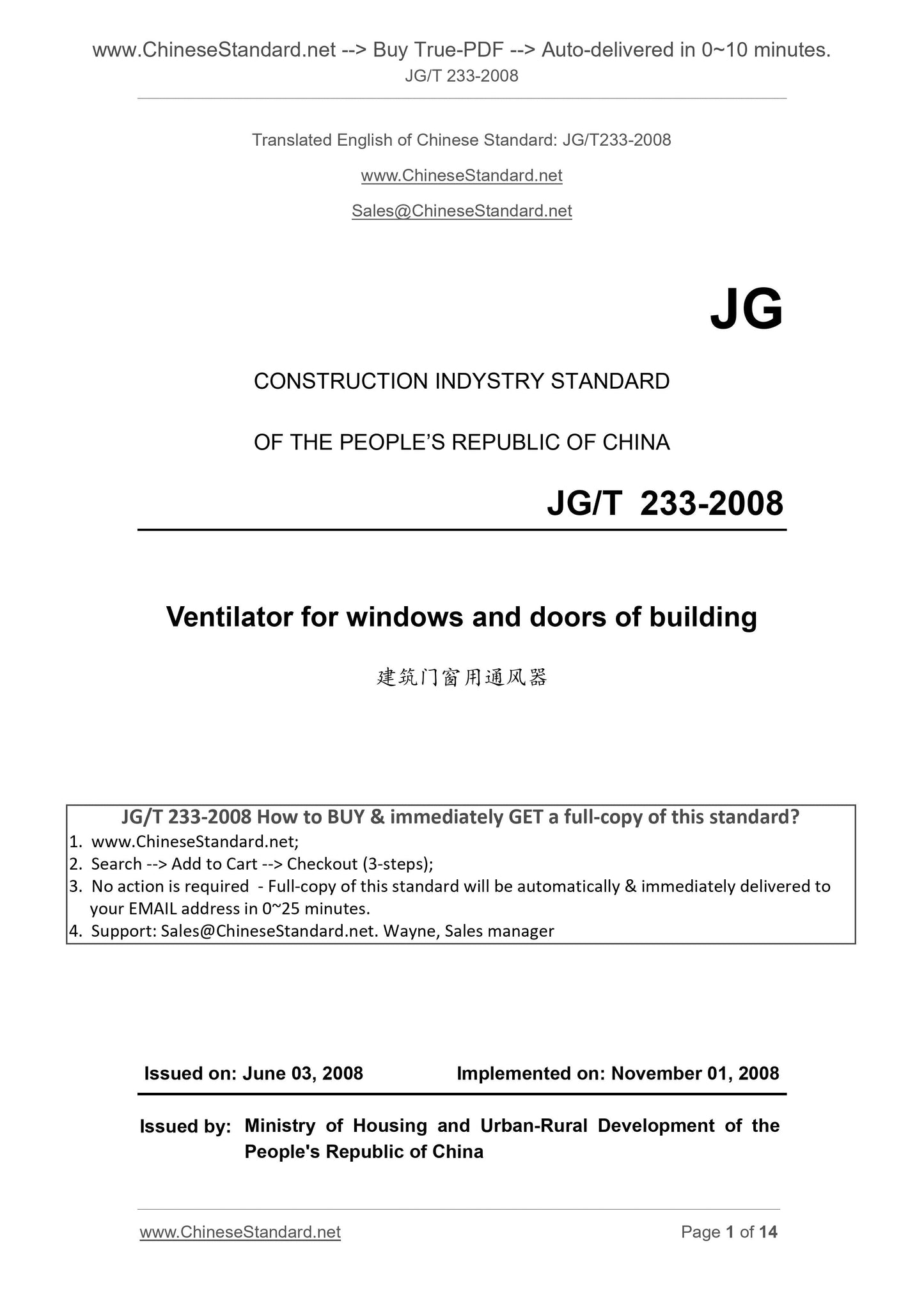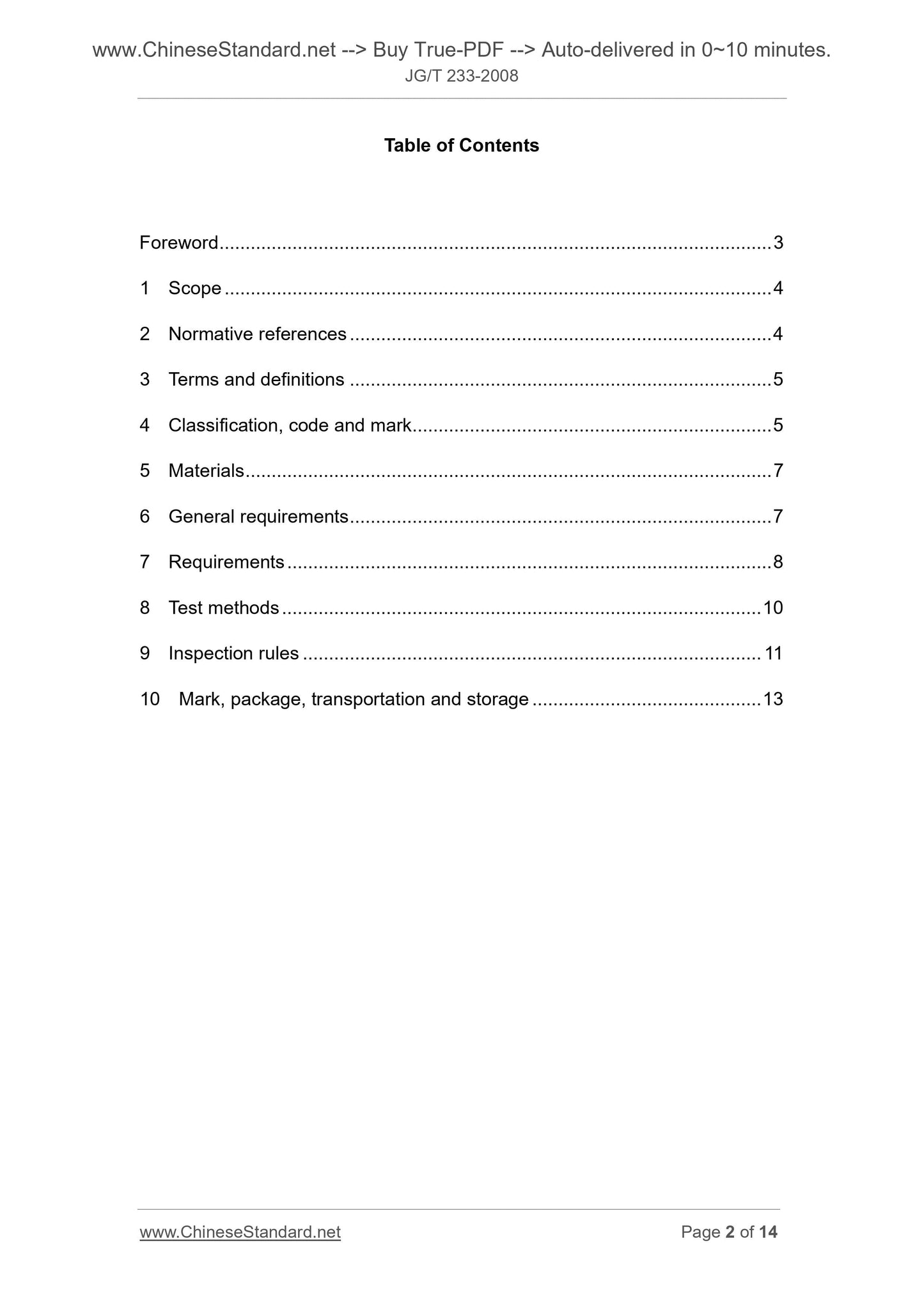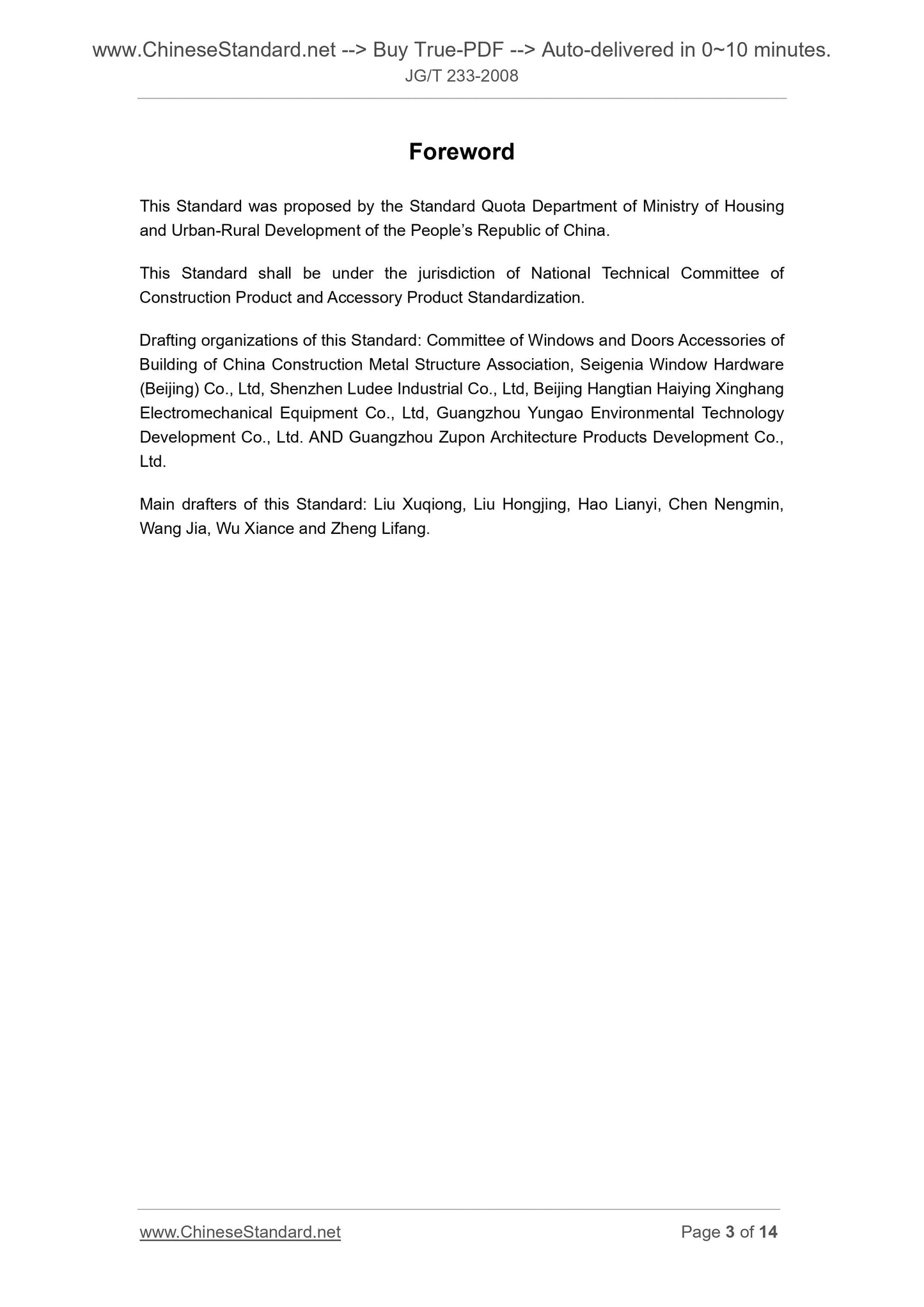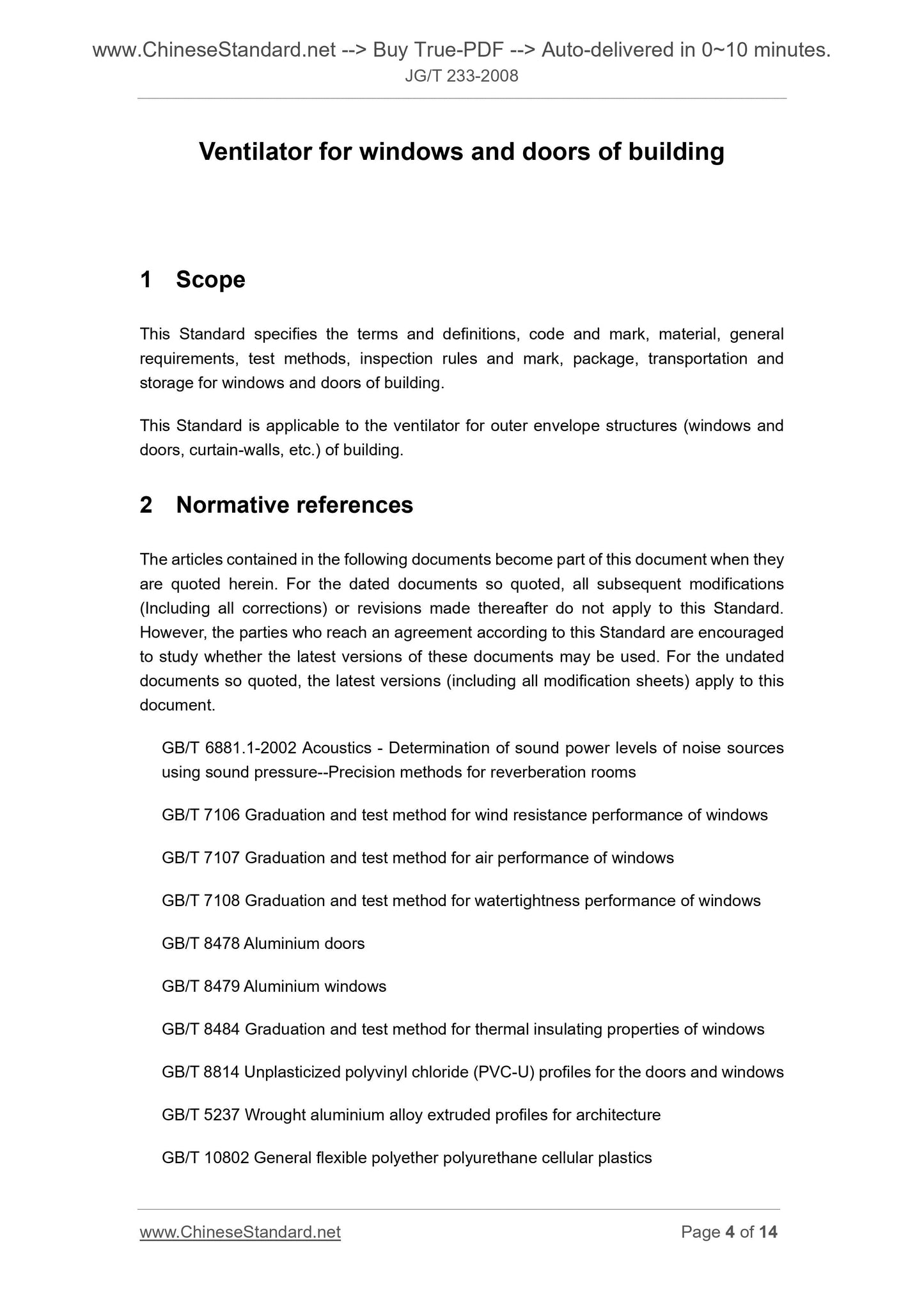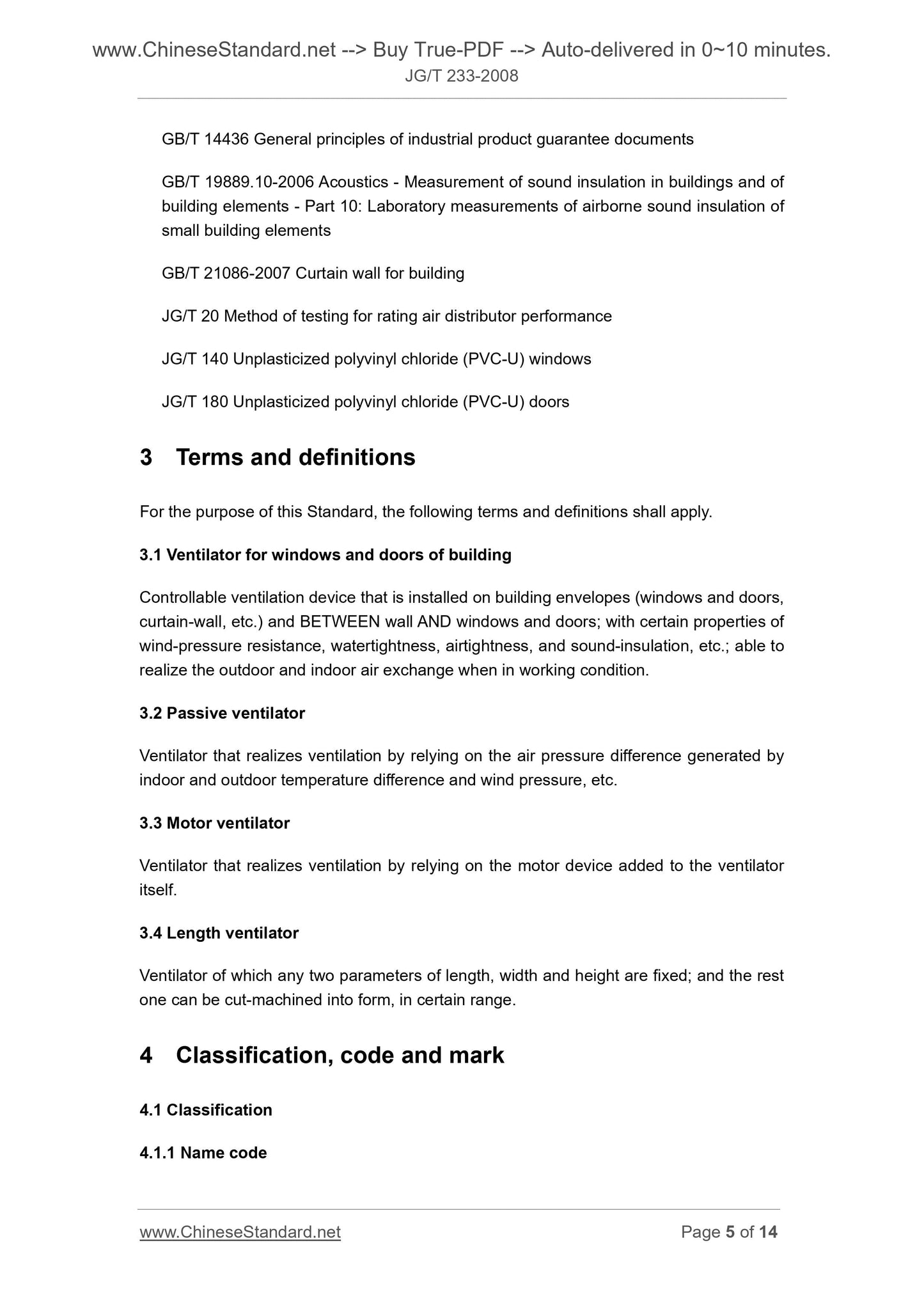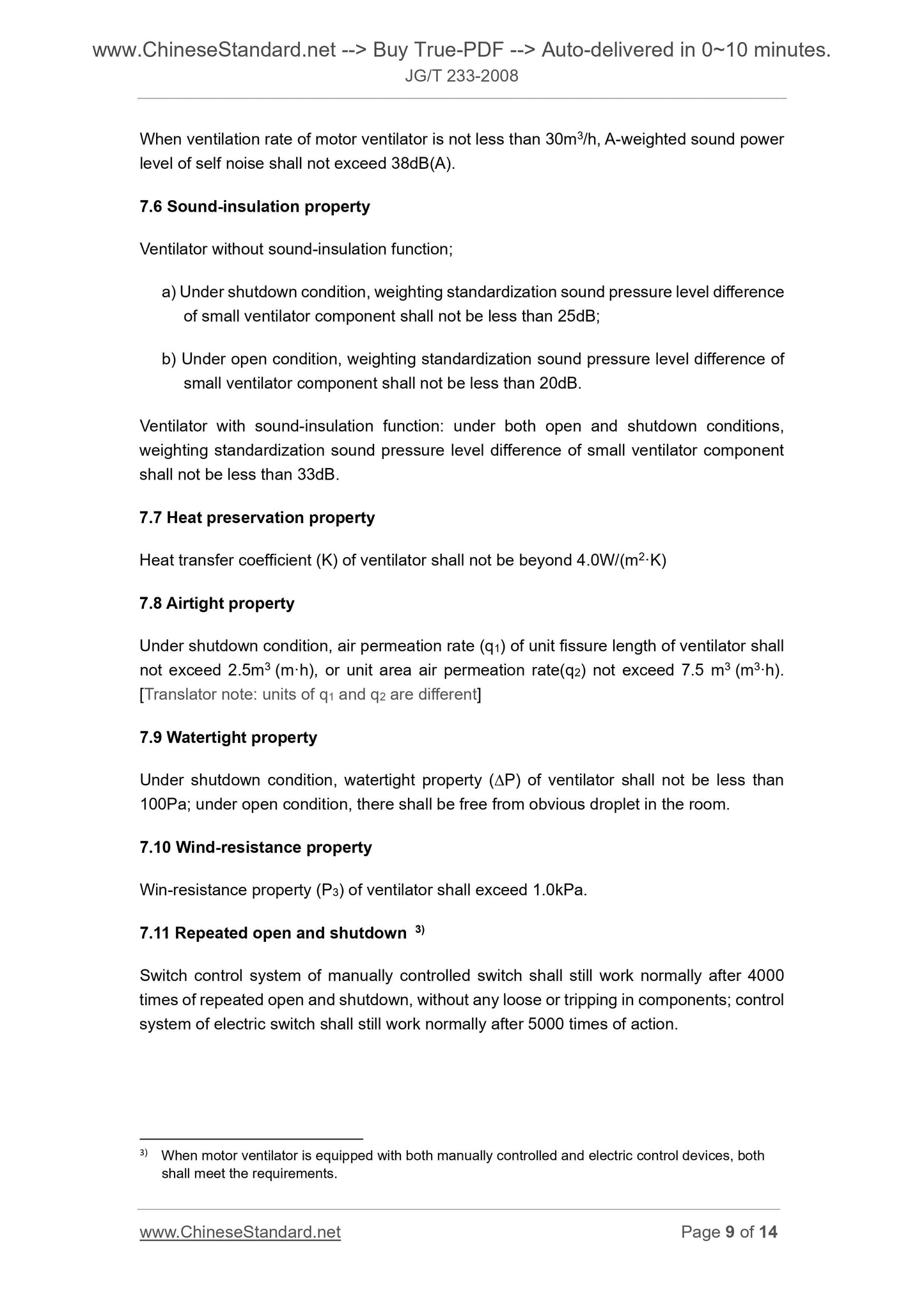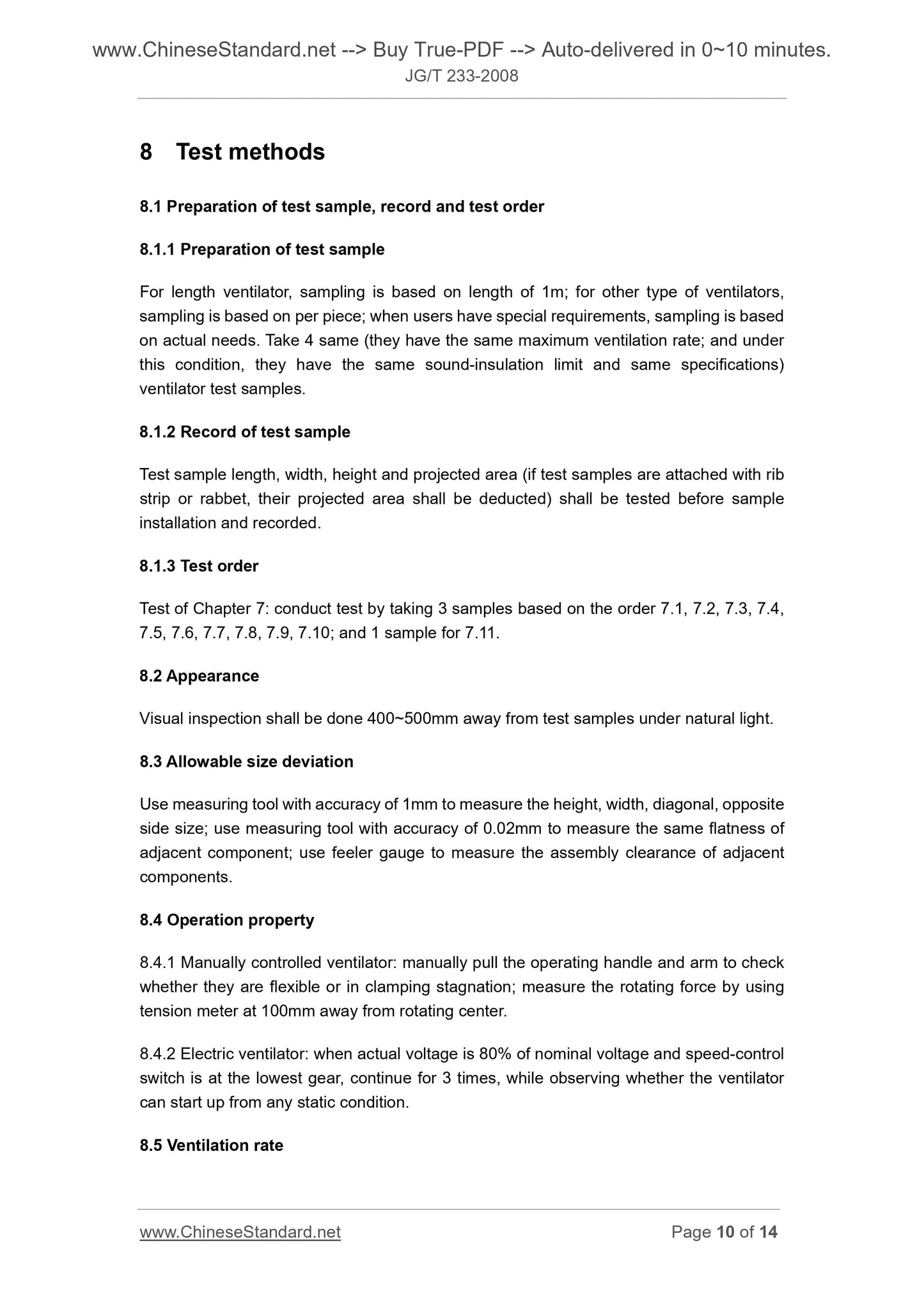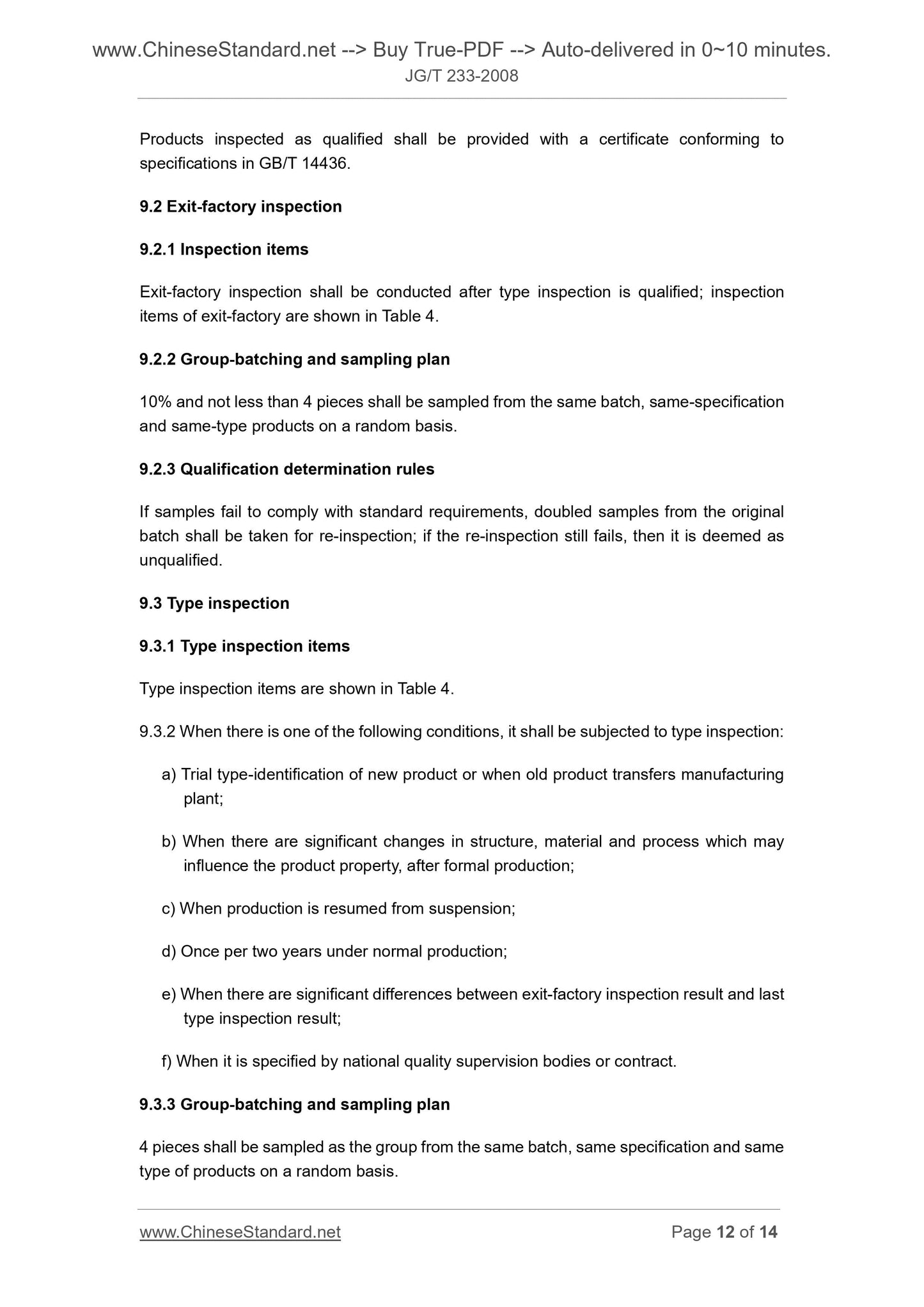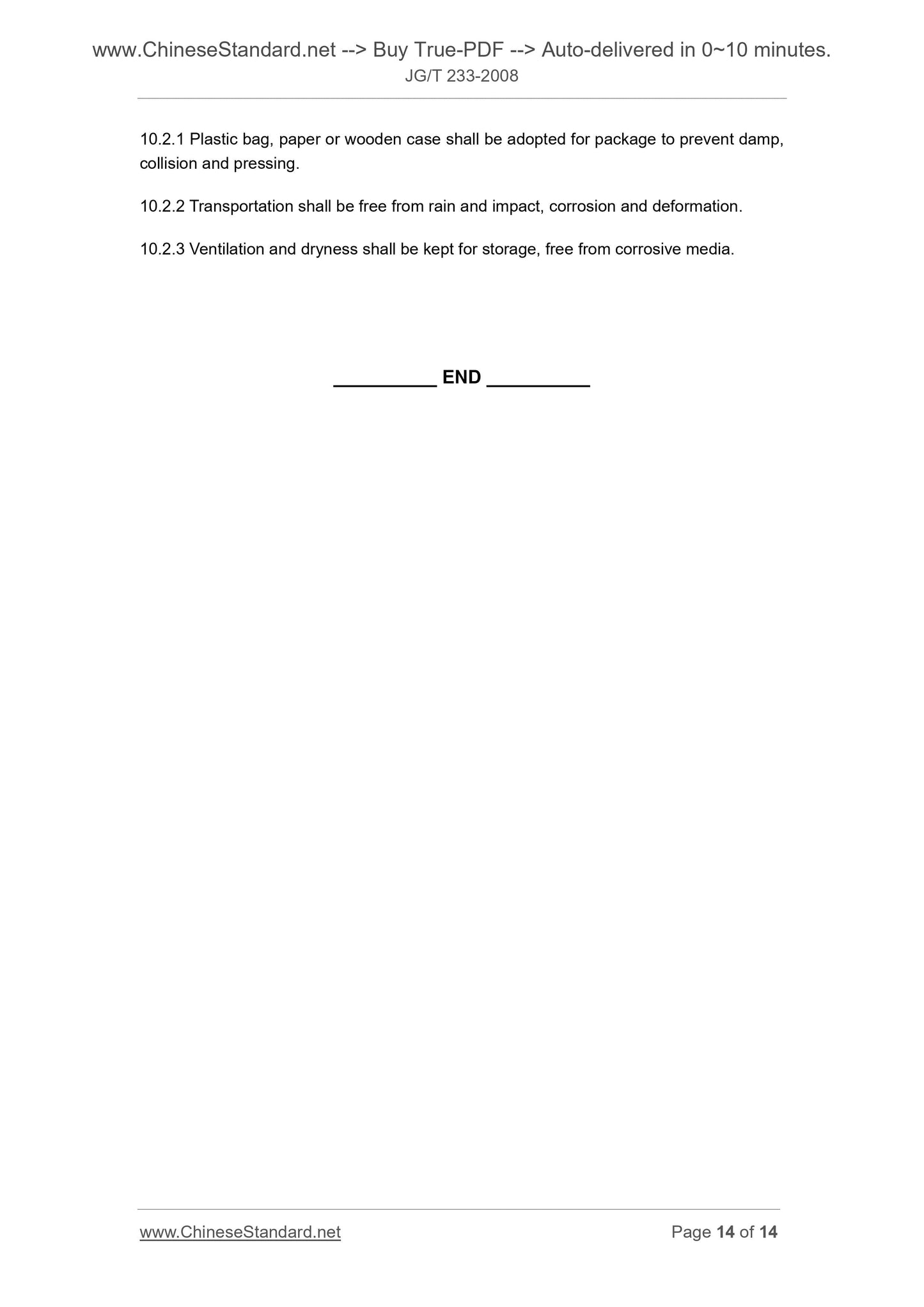1
/
of
9
www.ChineseStandard.us -- Field Test Asia Pte. Ltd.
JG/T 233-2008 English PDF (JG/T233-2008)
JG/T 233-2008 English PDF (JG/T233-2008)
Regular price
$90.00
Regular price
Sale price
$90.00
Unit price
/
per
Shipping calculated at checkout.
Couldn't load pickup availability
JG/T 233-2008: Ventilator for windows and doors of building
Delivery: 9 seconds. Download (and Email) true-PDF + Invoice.Get Quotation: Click JG/T 233-2008 (Self-service in 1-minute)
Newer / historical versions: JG/T 233-2008
Preview True-PDF
Scope
This Standard specifies the terms and definitions, code and mark, material, generalrequirements, test methods, inspection rules and mark, package, transportation and
storage for windows and doors of building.
This Standard is applicable to the ventilator for outer envelope structures (windows and
doors, curtain-walls, etc.) of building.
Basic Data
| Standard ID | JG/T 233-2008 (JG/T233-2008) |
| Description (Translated English) | Ventilator for windows and doors of building |
| Sector / Industry | Building and Construction Industry Standard (Recommended) |
| Classification of Chinese Standard | Q70 |
| Classification of International Standard | 91.060.50 |
| Word Count Estimation | 9,941 |
| Date of Issue | 2008-06-03 |
| Date of Implementation | 2008-11-01 |
| Quoted Standard | GB/T 6881.1-2002; GB/T 7106; GB/T 7107; GB/T 7108; GB/T 8478; GB/T 8479; GB/T 8484; GB/T 8814; GB/T 5237; GB/T 10802; GB/T 14436; GB/T 19889.10-2006; GB/T 21086-2007; JG/T 20; JG/T 140; JG/T 180 |
| Regulation (derived from) | Bulletin of the Ministry of Housing and Urban No. 36 |
| Issuing agency(ies) | Ministry of Housing and Urban-Rural Development of the People's Republic of China |
| Summary | This standard specifies the building doors and windows with ventilators terms and definitions, classification, designation and marking, materials, general requirements, test methods, inspection rules and signs, packaging, transportation and storage. This standard applies to building envelope (doors, windows, walls, etc.) with a ventilator. |
Share
